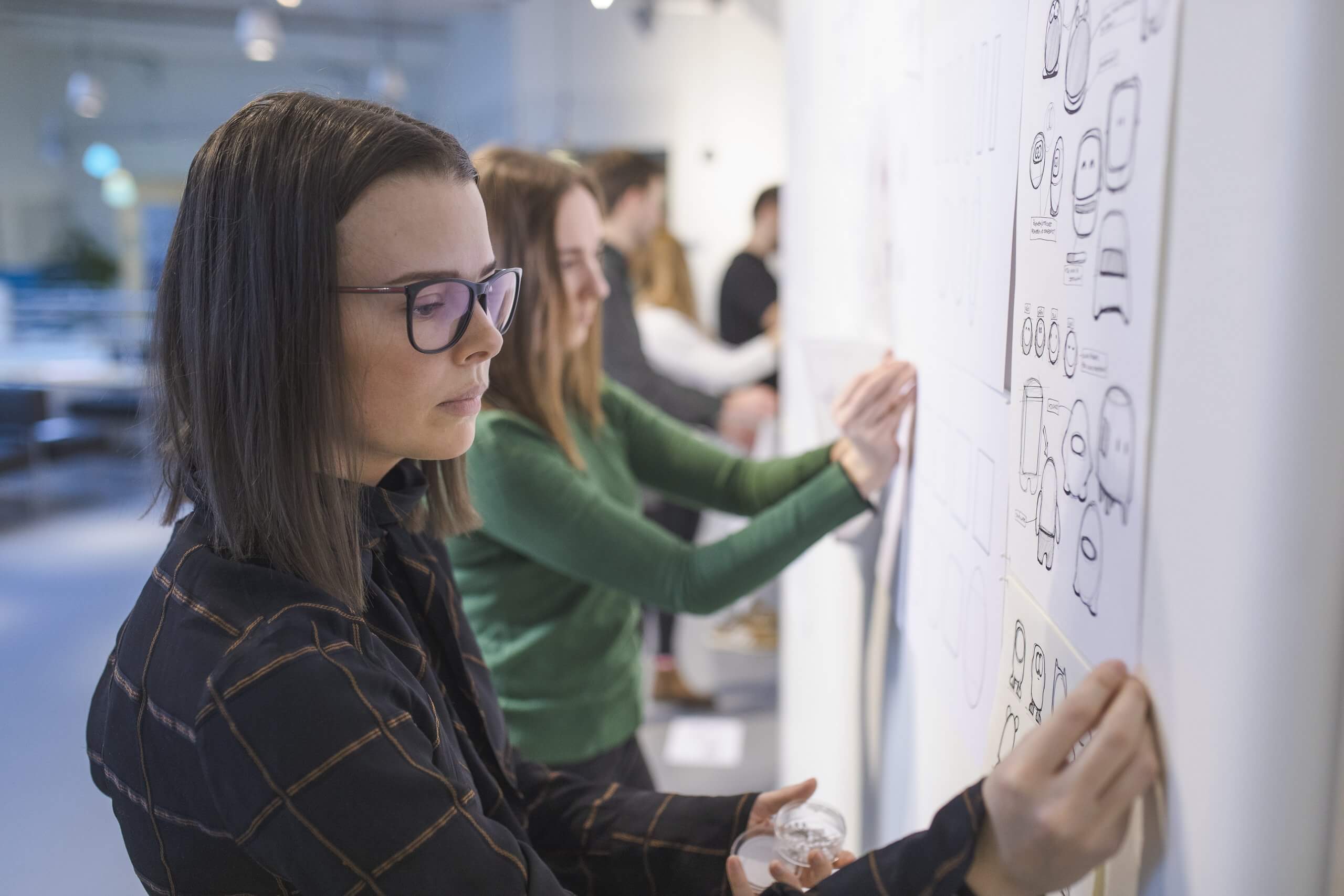What did it take to design Sweden’s award-winning, wellbeing-first X2000 high-speed train interior? How do you produce a corporate app like Forza Football that makes the world of football a better and more democratic place? What was the thought process behind “Vento,” a portable device for emergency hypoxia treatment in extreme altitudes?
Ask 99 designers what “good design” is and you’ll likely get 99 different answers. Susan Kare, the person behind the first icons, typefaces, and interfaces of the first Apple Macintosh said, “Good design’s not about what medium you’re working in. It’s about thinking hard about what you want to do and what you have to work with before you start.” On designing for humans, Stefan Sagmeister, the man renowned for album covers and posters for the likes of Rolling Stone and Lou Reed said, “Ensure it feels like it’s made by humans, for humans.” German industrial designer Dieter Rams, who was responsible for the design of Braun’s consumer products for many years, said “Good design is honest.”
On a more granular level, professionals stress on the importance of both hard skills and soft skills if aspiring designers want to make it big today. Familiarity with a range of Adobe programmes, memorising shortcut keys, a keen tracking of how technology is opening new frontiers, multidisciplinarity — these are the technical skills to be successful.
Values are just as important. The designer-client relationship depends on effective collaboration — mastering how to work with a wide range of characters is key. Resilience is another must-have; getting back up after multiple rejections is a requirement for most jobs. Being resourceful comes in handy in finding inspiration day after day. And to achieve that sought-after added value for a product or service? Courage to think out of the box helps.
It may even take an acute understanding of psychology too. When Umeå Institute of Design (UID) students worked on an unconventional automotive design project with Honda, their brief was to propose a full-fledged automotive concept for the electric vehicle market in 2030. The brief included grasping the inner values, needs, and aspirations of an individual user.
Fanny Jonsson and fellow student Dong Hao were tasked to design for the following criteria: 30 to 35 years, Norwegian, and female. They quickly realised that when designing for one particular individual, as opposed to the usual broad range of target groups, the process becomes “driven more by emotion than function.”

Source: Umeå University, Institute of Design
“Soon, you find yourself describing your design goals through emotional metaphors. For me, it definitely sparked creative processes that I will try to use going forward. In that sense, it really was an eye-opening project,” says Jonsson.
The student duo chose Gunn Narten, a well-known firefighter in her native Norway. At first, the students based their design on Narten’s active, outdoorsy explorer character. Tutors at Honda pushed them to dig further.
“Her key values turned out to revolve more around caring for others and her pursuit of spiritual relief through nature. Of course, we did end up designing a hiking car. But our goals were not defined by the conventional characteristics of an off-road vehicle. Our guiding metaphor throughout the project ended up being a camp fire, a safe place where you can interact with your loved ones,” says Jonsson.
At the other end of the spectrum, there is Alberto Villarreal. The Master in Transportation Design graduate from UID believes that in design, one should always strive towards becoming a generalist, not a specialist. Shortly after graduating, Villareal switched lanes and traded transportation for other areas of design. In 2013, he moved to Google to spearhead the tech giant’s first venture into the global mobile phone market, after completing … the interior design of movie theatres at the National Mexican Film Institute?
It’s a jump to a vastly different industry but he stands by his motto to always try different things. “I never wanted to limit myself to one type of product or a specific industry. I think it makes you a better designer to work on a variety of projects. Actually, the more you know about a certain type of product, the more you start thinking about how to not do things. Then you might start to limit yourself creatively,” says Villarreal.
When asked what are the inspirations, methods, and mechanisms that allow the creative juices to flow in industrial design, Villareal says it’s the front end of a product’s journey. “For me, that’s the heavily creative phase where you have to come up with a lot of concepts through sketching, mock-ups, prototyping and making models. At that stage, when it’s just you and the form, that’s really a beautiful process,” he says.
UID students get a headstart in this process thanks to the university’s close links with industry and research. Project work often require collaboration with industrial partners or research institutions — since UID’s establishment in 1989, the leading design school has collaborated with over 80 companies from a wide range of industries.

Source: Umeå University, Institute of Design
With these collaborations, UID students get to solve important problems in a realistic context, gain insight into the industrial product development process, and get acquainted with industry figures from across the world. Often, students get to work on dilemmas beyond what the company’s product development teams have on their daily agendas.
Bilgi Karan, who is currently building the UX team responsible for IKEA’s smart home products, remembers being able to work on projects with “amazing companies” like Sony, Boeing and Spotify as an UID student. He says, “UID has changed me to my core. Apart from making me a better designer and a better professional, this school taught how to be a world citizen.”
UID offers three Master of Fine Arts degrees in Advanced Product Design, Interaction Design and Transportation Design. Find out more about these specialised and internationally-oriented programmes here. At UID, you’ll learn how to become a leading designer of tomorrow.
Follow Umeå Institute of Design on Facebook, Twitter, YouTube and Instagram
Like this? Then you’ll love…
Inspiration, talent, opportunity: What it means to be a student at Umeå Institute of Design
European Design Schools: Where talent meets opportunity











